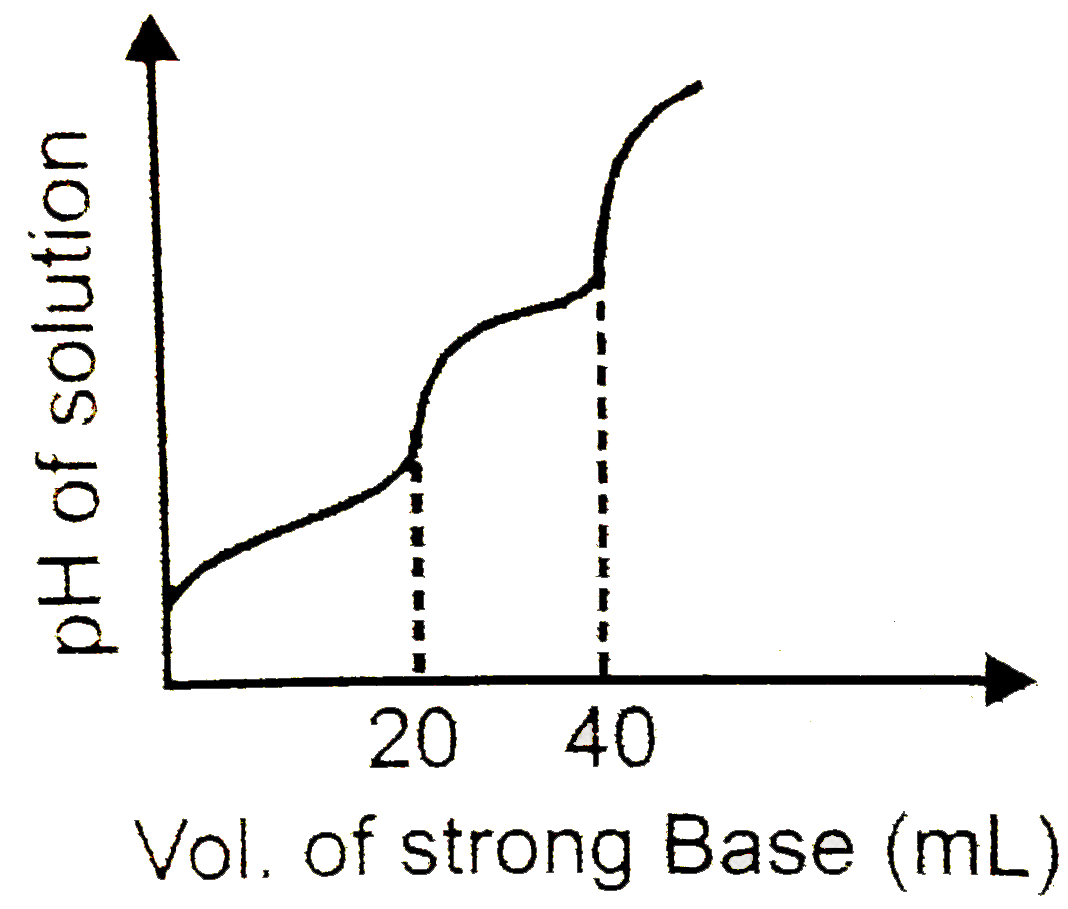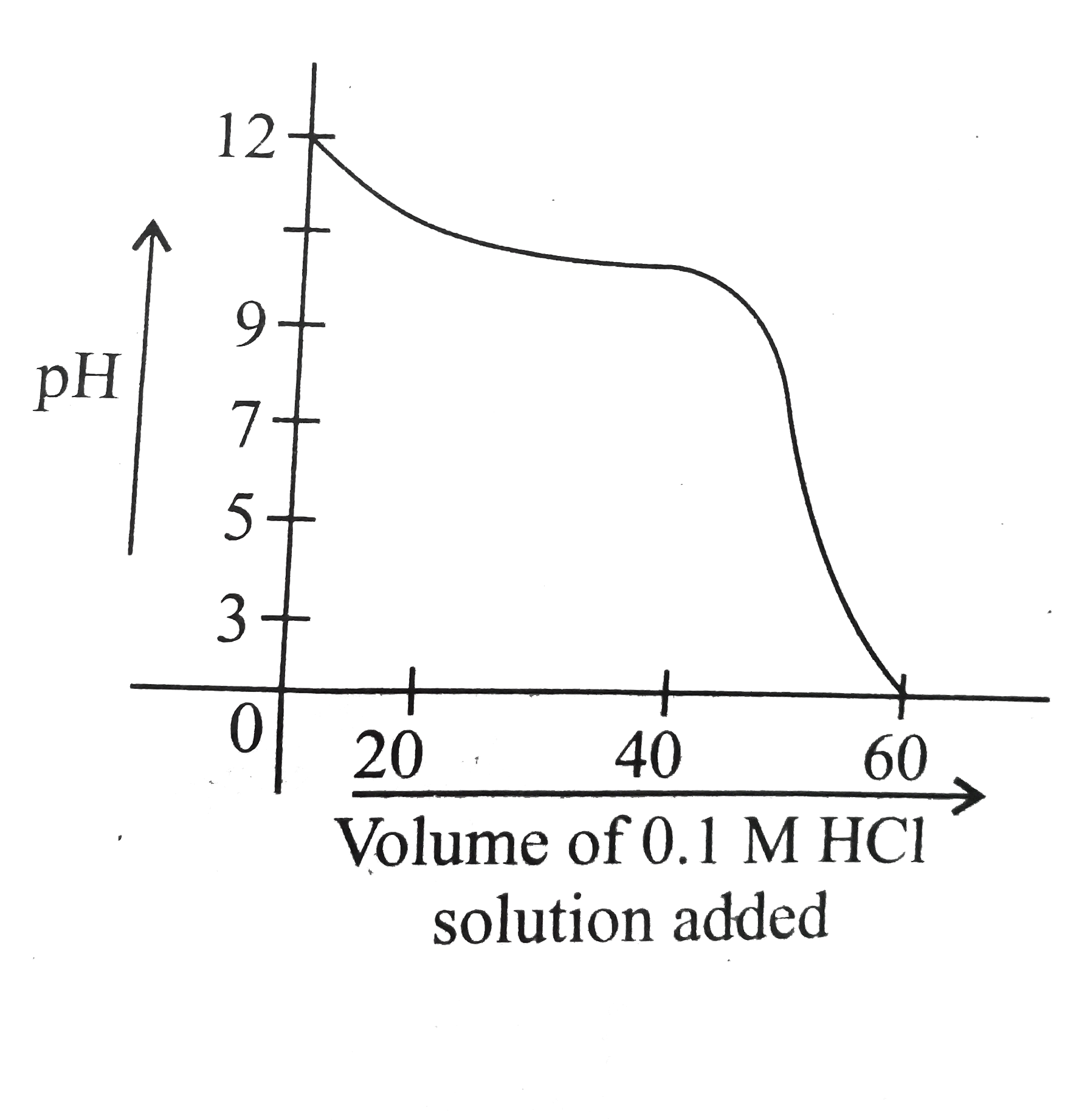In the titration of NH4OH versus HCl, the pH of the solution at equivalence point is about:
5.5
7
8.5
9.5
The correct Answer is:A
To determine the pH at the equivalence point in the titration of ammonium hydroxide (NH4OH) with hydrochloric acid (HCl), we can follow these steps:
Step 1: Identify the nature of the reactants
- Ammonium hydroxide (NH4OH) is a weak base.
- Hydrochloric acid (HCl) is a strong acid.
Step 2: Write the neutralization reaction
- The reaction between NH4OH and HCl can be represented as:
NH4OH+HCl→NH4Cl+H2O
- This reaction produces ammonium chloride (NH4Cl), which is a salt.
Step 3: Analyze the salt formed
- Ammonium chloride (NH4Cl) is a salt formed from a weak base (NH4OH) and a strong acid (HCl).
- The nature of the solution at the equivalence point is determined by the properties of this salt.
Step 4: Determine the pH at the equivalence point
- Since NH4Cl is a salt of a weak base and a strong acid, it will hydrolyze in water to produce an acidic solution:
NH+4+H2O⇌NH4OH+H+
- This reaction shows that NH4+ ions will release H+ ions into the solution, making the solution acidic.
Step 5: Conclusion about pH
- Therefore, at the equivalence point, the pH of the solution will be less than 7, indicating an acidic solution.
- Among the given options (5.5, 7, 8.5, and 9.5), the only value that is less than 7 is 5.5.
Final Answer
- The pH of the solution at the equivalence point is approximately 5.5.
---
- Ammonium hydroxide (NH4OH) is a weak base.
- Hydrochloric acid (HCl) is a strong acid.
- The reaction between NH4OH and HCl can be represented as:
NH4OH+HCl→NH4Cl+H2O
- This reaction produces ammonium chloride (NH4Cl), which is a salt.
- Ammonium chloride (NH4Cl) is a salt formed from a weak base (NH4OH) and a strong acid (HCl).
- The nature of the solution at the equivalence point is determined by the properties of this salt.
- Since NH4Cl is a salt of a weak base and a strong acid, it will hydrolyze in water to produce an acidic solution:
NH+4+H2O⇌NH4OH+H+
- This reaction shows that NH4+ ions will release H+ ions into the solution, making the solution acidic.
- Therefore, at the equivalence point, the pH of the solution will be less than 7, indicating an acidic solution.
- Among the given options (5.5, 7, 8.5, and 9.5), the only value that is less than 7 is 5.5.
- The pH of the solution at the equivalence point is approximately 5.5.
Topper's Solved these Questions
- IONIC EQUILIBRIUMBOOK - CENGAGE CHEMISTRY ENGLISHCHAPTER - IONIC EQUILIBRIUMEXERCISE - Ex 8.5
6 Videos
- IONIC EQUILIBRIUMBOOK - CENGAGE CHEMISTRY ENGLISHCHAPTER - IONIC EQUILIBRIUMEXERCISE - Exercises Subjective (Weak Acid And Weak Bases)
15 Videos
- IONIC EQUILIBRIUMBOOK - CENGAGE CHEMISTRY ENGLISHCHAPTER - IONIC EQUILIBRIUMEXERCISE - Ex 8.3
38 Videos
- HYDROGEN, WATER AND HYDROGEN PEROXIDEBOOK - CENGAGE CHEMISTRY ENGLISHCHAPTER - HYDROGEN, WATER AND HYDROGEN PEROXIDEEXERCISE - Subjective Archive (Subjective)
3 Videos
- ISOMERISMBOOK - CENGAGE CHEMISTRY ENGLISHCHAPTER - ISOMERISMEXERCISE - Assertion-Reasoning Type
1 Videos
Similar Questions
In the titration of NH4OH) with HCl, the indicator which cannot be used is :
View Solution100 ml of 0.2 M CH3COOH is titrated with 0.2 M NaOH solution. The pH of of the solution at equivalent point will be (pKa of CH3COOH=4.76)
View SolutionDuring the titration of a weak diprotic acid (H2A) against a strong base (NaOH), the pH of the solution half-way to the first equivalent point and that at the first equivalent point are given respectively by:
View Solution10 mL of H2A(weak diprotic acid) solution is titrated against 0.1M NaOH. pH of the solution is plotted against volume of strong base added and following observation is made. If pH of the solution at first equivalence point is pH1 and at second equivalence point is pH2. Calculate the value of (pH2−pH1) at 25∘C
Given for H2A,pKa1 =4.6 and pKa2 =8, log 25=1.4
View Solution10 mLof H2A (weak diprotic acid) solutions is titrated against 0.1M NaOH. pH of the solution is plotted against volume of strong base added and following observation is made. If pH of the solution at 1st equivalence point is pH1 and at 2nd equivalence point is pH2, Cal the value (pH2,−pH1) at 25∘C. Given for H2,A,pKal=4.6&pKa2=8

View Solution20 ml of 0.1 M ' NH_3', solution is titrated with 0.025M HCI solution. What is the pH of the reaction mixture at equivalence point at 25∘C ? (Kbof NH3is 2×10−6).
View SolutionAn aqueous solution of HCl is 10−9MHCl. The pH of the solution should be
View SolutionThe equivalent conductances of an infinitely dilute solution NH4CI is 150 and the ionic conductances of OH− and CI− ions are 198 and 76 respectively. What will be the equivalent conductance of the solution of NH4OH at infinite dilution. if the equivalent conductance of a 0.01N solution NH4OH is 9.6, what will be its degree of dissociation.
View SolutionWhen weak base solution (50mLof0.1NNH4OH) is titrated with strong acid (0.1NHCI), the pH of the solution initially decrease fast and then decreases slowely till near the equivalence point (as shown in figure). Which of the following is//are correct.

View SolutionAn acid-base titration consists of the controlled addition of a dissolved base to a dissolved acid (or the reverse). Acid and base react rapidly to neutralize each other. At the equivalence point, equivalents of reacting substances are equal. The pH during a titration changes every time with a drop of titrant added, but the rate of this change varies enormously. A titration curve, graph of pH as a function of the volume of titrant, displays in detail how the pH changes over the course of an acid base titration. Significantly. the pH changes most rapidly near the equivalence point. The exact shape of a titration curve depends on the KaandKb of acid and base
The pH at equivalence point is:
View Solution
